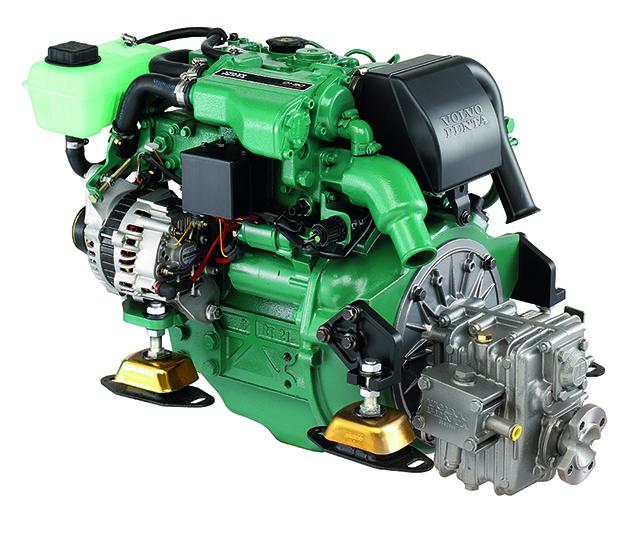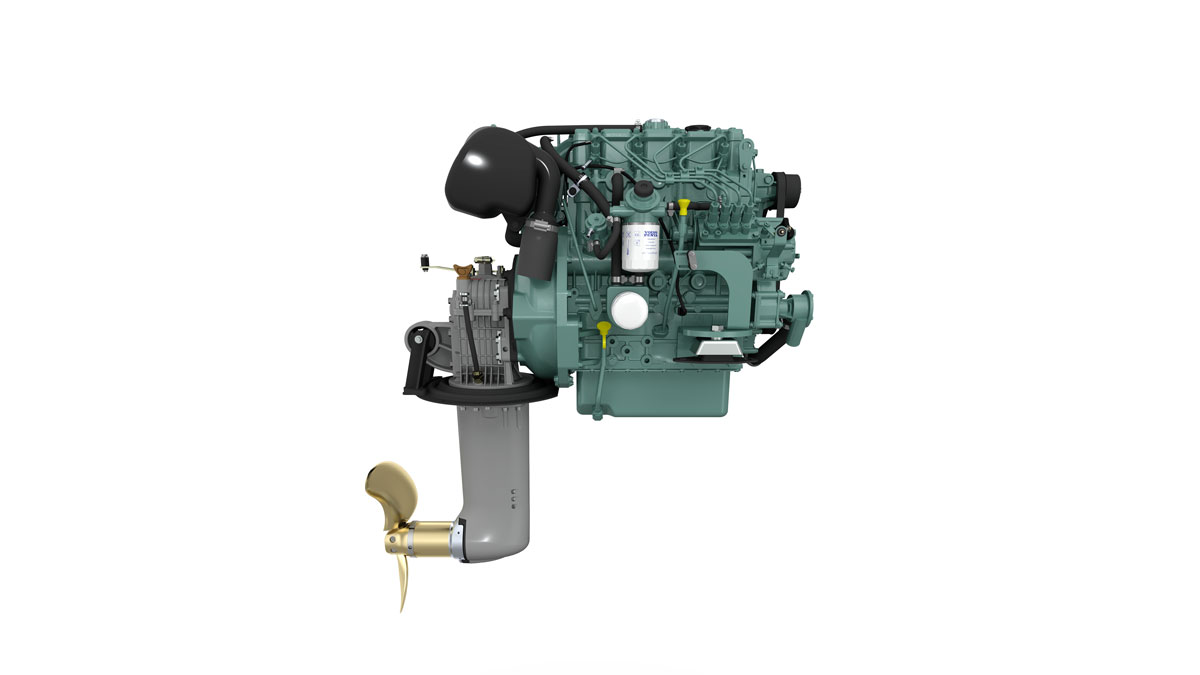Engine power relies on a healthy boat alternator. Callum Smedley shares how to keep it running smoothly
Depending on the size of the engine, a boat alternator will usually have a maximum output of between 35A and 60A as standard – although it’s possible to fit one with a higher output.
Modern alternators (as opposed to straightforward DC dynamos) generate alternating current (AC) and convert it into direct current (DC) to charge the battery.
The voltage is regulated at a nominal 12v (or 24v) to charge the battery and supply the electrical loads.
When the boat alternator is charging, the output tends to be around 14v, and when the battery is resting it tends to be around 12.5v.
Inside an AC generator, there is a magnet rotating inside coils of wire.
This rotating magnet cuts the lines of flux between the coils, making electricity.
The reason that it makes AC power is because the rotating magnet has a north and south pole, which basically means that it makes positive power for one half a revolution and then negative power for the second half of the revolution.
Hence the term ‘alternating’. Boat batteries are DC, so the second part of the alternator, called a rectifier, changes AC power into DC power.
The battery must never be disconnected from the alternator when the engine is running, or else the alternator’s ‘diodes’ (part of the rectifier) will be destroyed.
Continues below…
9 boat engine checks for a trouble free season
Dennison Berwick gives you a complete guide to getting you boat engine fired up and ready for the new season
How it works: The diesel engine: The 4-stroke cycle
Understanding how your diesel engine works is key to knowing how to look after it, and fix it when it…
How it works: Diesel fuel system – from tank to cylinder
Every sailor needs to understand how their diesel engine works. In the second of this series, we look at the…
How it works: Looking after fuel: diesel, hoses and filters
Looking after fuel is essential for keeping your engine running smoothly. Callum Smedley shares his top tips
In other words, DO NOT switch off the engine battery switch when the engine is running.
As long as the alternator is kept clean and cool it generally runs without many problems.
Alternators, however, don’t like water, so any leaks, be they fresh or sea water, can damage the alternator if they get inside.
And the alternator can’t be sealed because it is air cooled.

In the diagram shown above, the fan is the green-coloured part that forces air through the alternator, to cool it.
The air vents are at the back of the alternator by the terminal screws.
If the alternator is struggling to charge the battery it could be because the drive belt is slipping.
As the alternator produces more electricity, it gets harder to turn – a bit like pedalling a bike uphill instead of on the flat.
So, if the belt is worn or slack, it will slip. To fix this, the belt should be re-tensioned.
It’s always a good idea to check the belt for any damage, such as wear or cracks, at the same time.
If in doubt, change it. Don’t forget that this belt is often also used to drive a water pump, so it’s very important.
The new edition Diesels Afloat (Fernhurst, £18.99) is available at www. fernhurstbooks.com. It follows the syllabus of the RYA Diesel Engine and MCA Approved Engine Course 1.
Buy Diesels Afloat from Amazon (UK)
Buy Diesels Afloat from Amazon (US)
Buy Diesels Afloat from Foyles (UK)
Buy Diesels Afloat from Waterstones (UK)
Buy Diesels Afloat from Google Play
Note: We may earn a commission when you buy through links on our site, at no extra cost to you. This doesn’t affect our editorial independence.
Enjoyed reading How it works: the boat alternator?
A subscription to Yachting Monthly magazine costs around 40% less than the cover price.
Print and digital editions are available through Magazines Direct – where you can also find the latest deals.
YM is packed with information to help you get the most from your time on the water.
-
-
-
- Take your seamanship to the next level with tips, advice and skills from our experts
- Impartial in-depth reviews of the latest yachts and equipment
- Cruising guides to help you reach those dream destinations
-
-
Follow us on Facebook, Twitter and Instagram.








